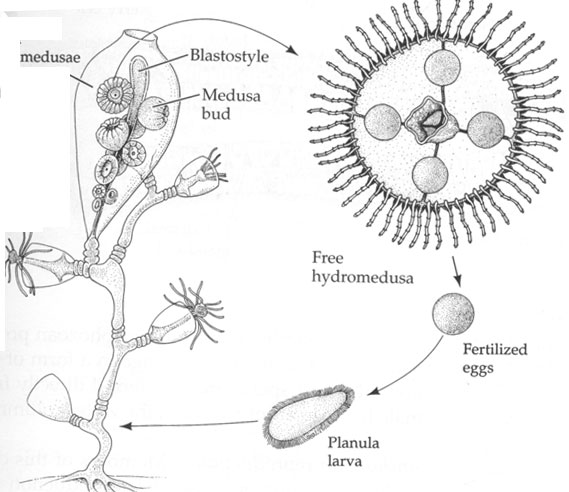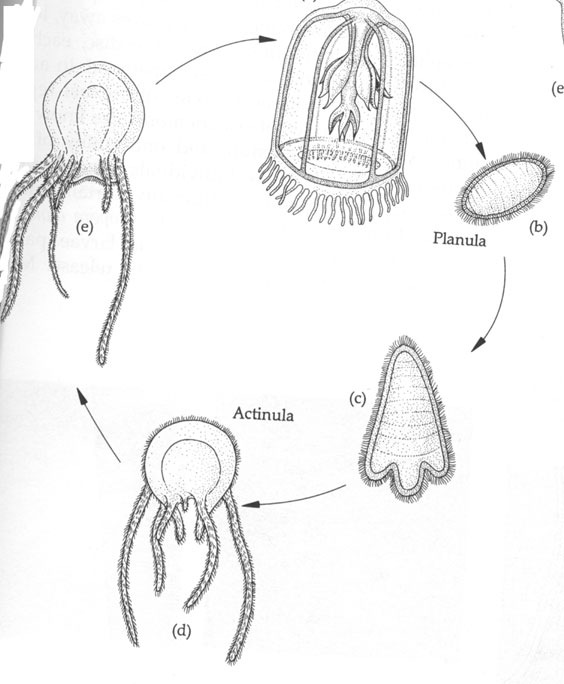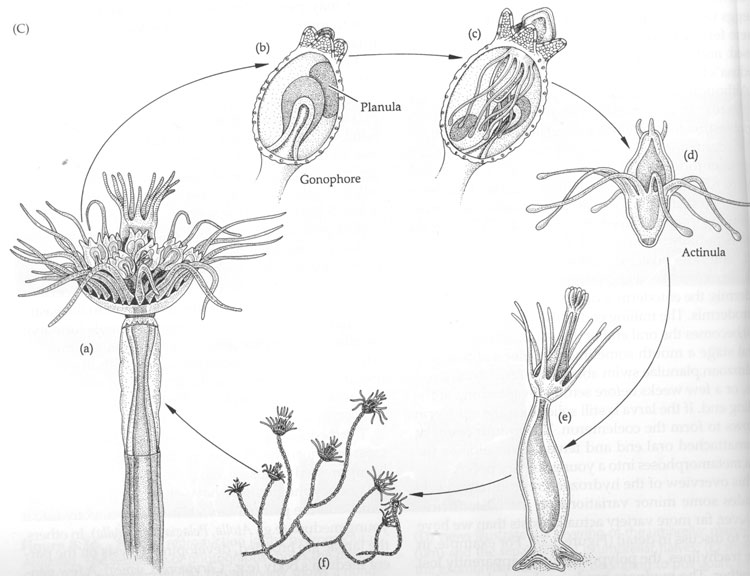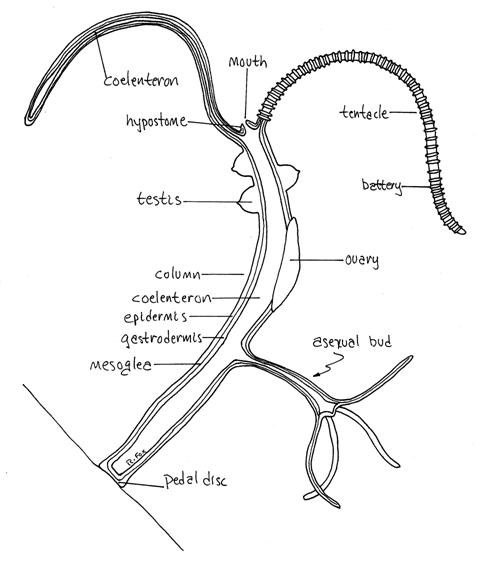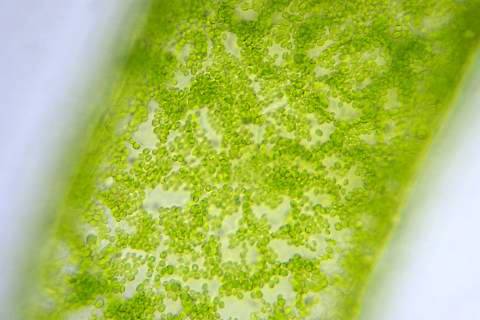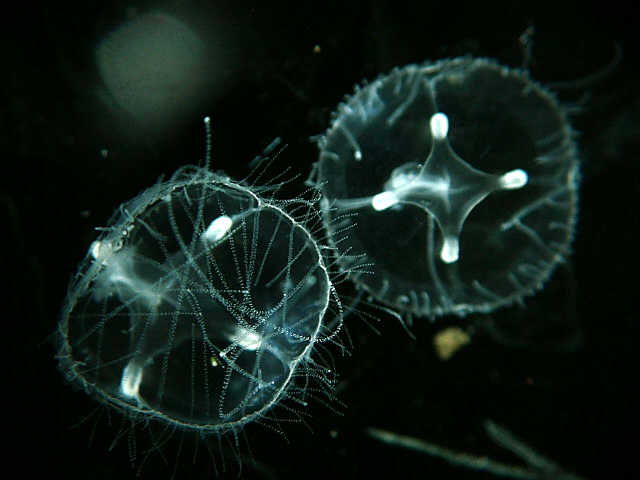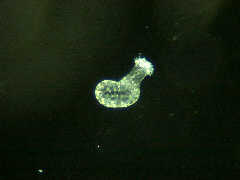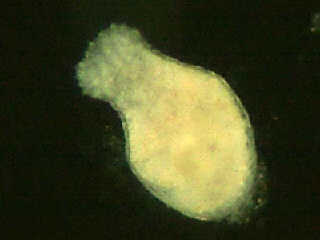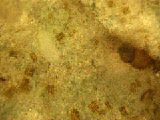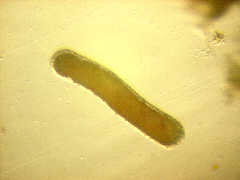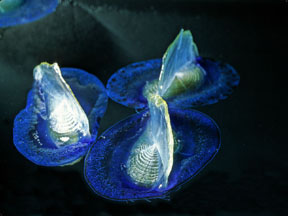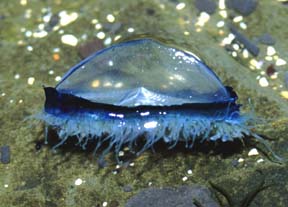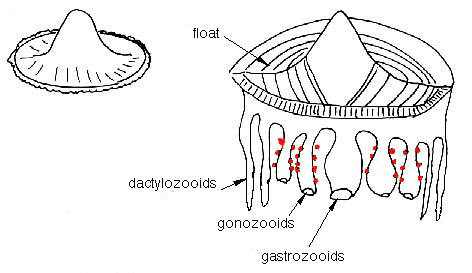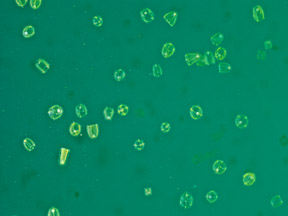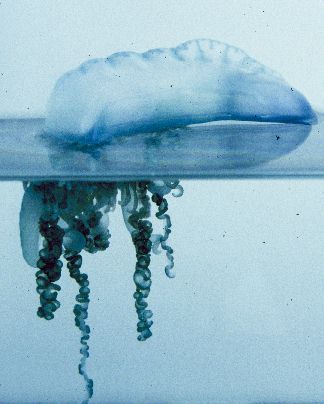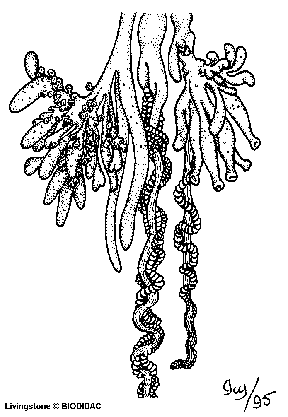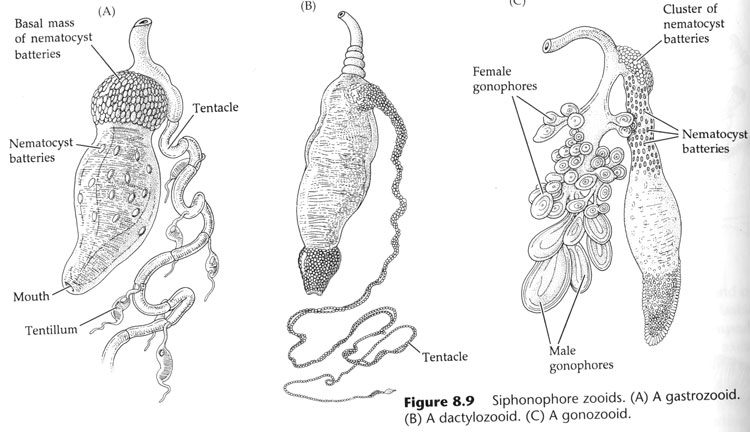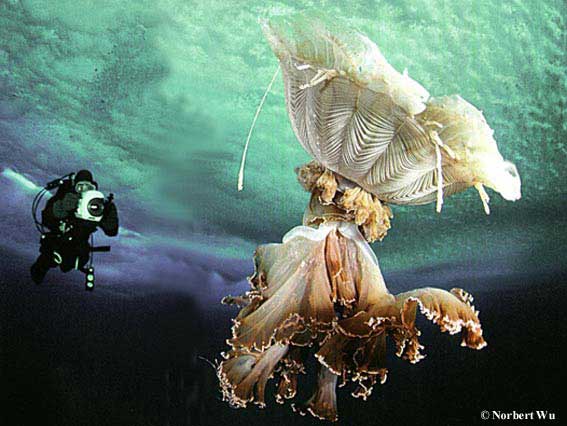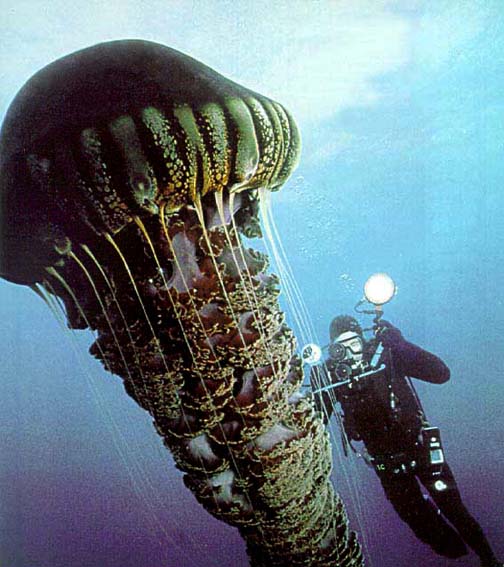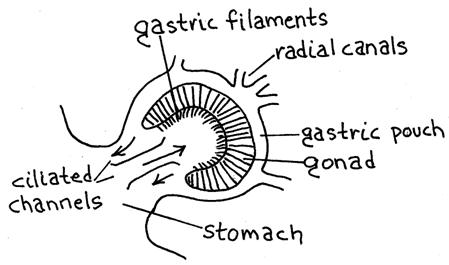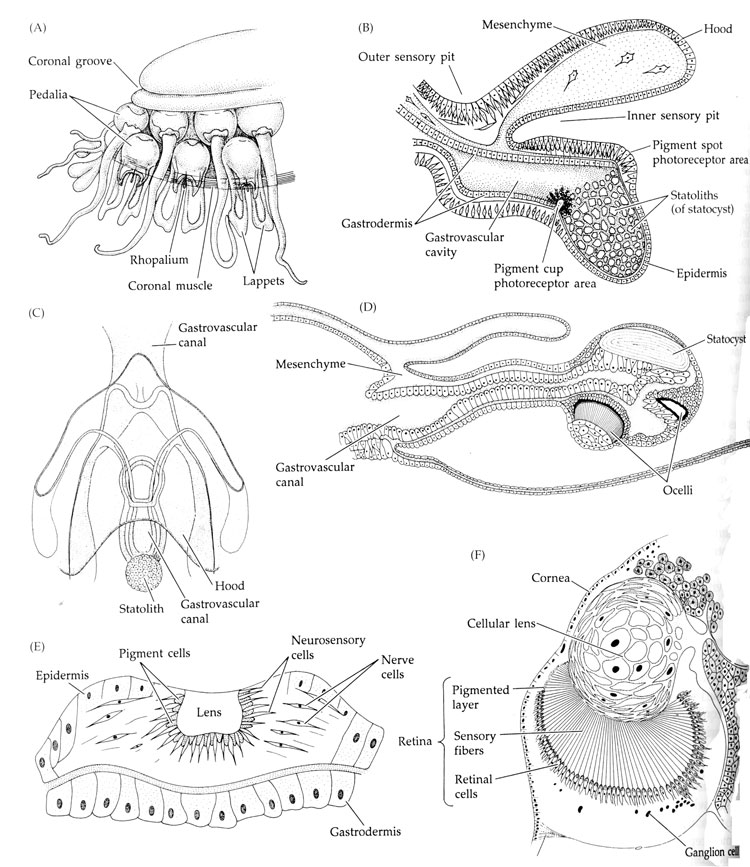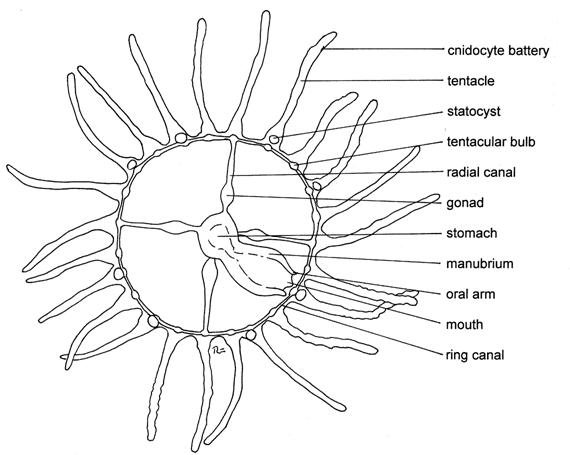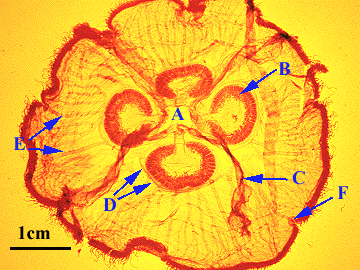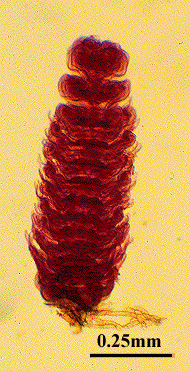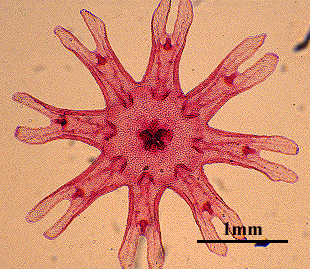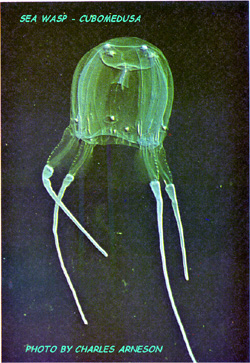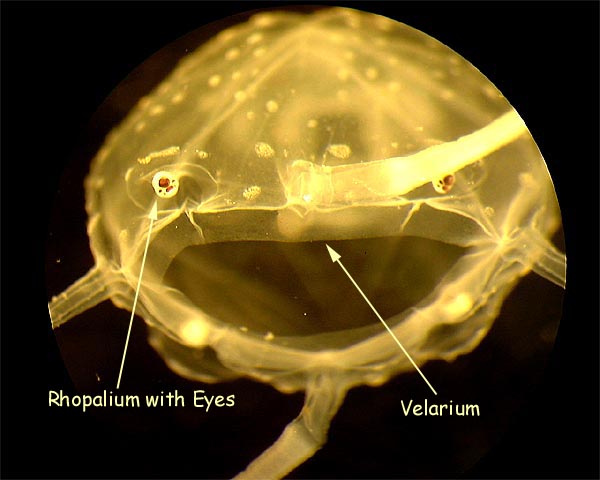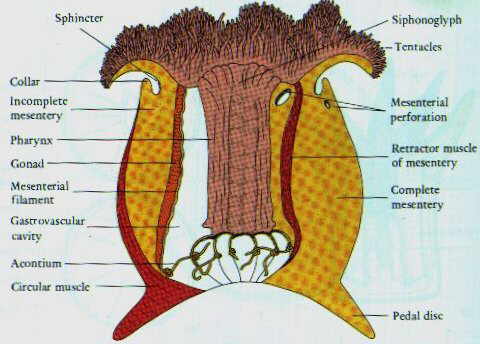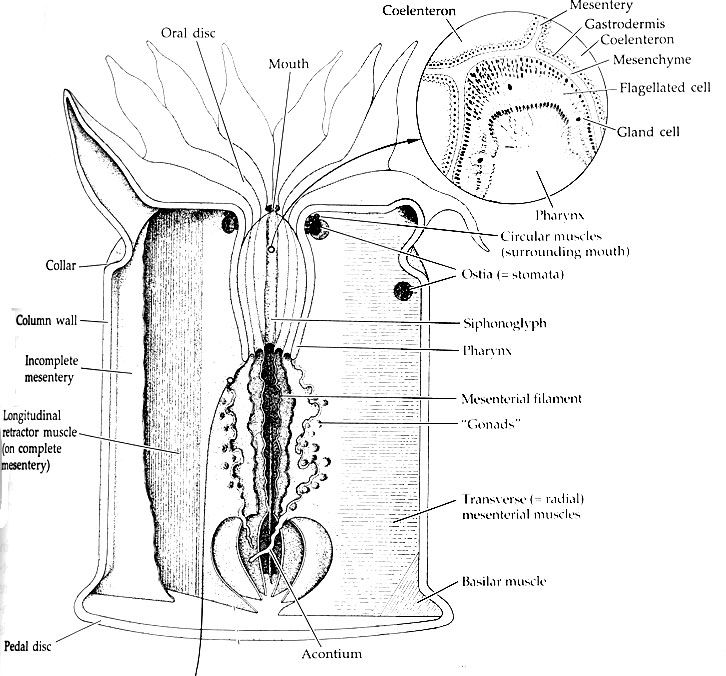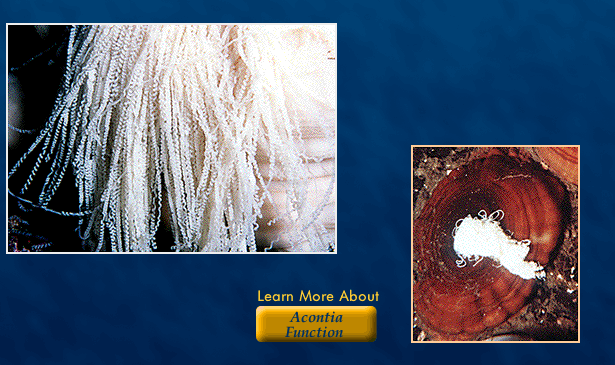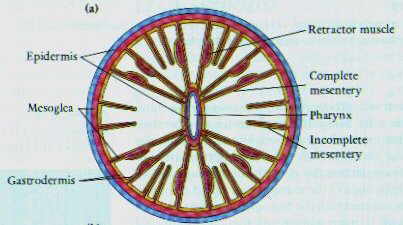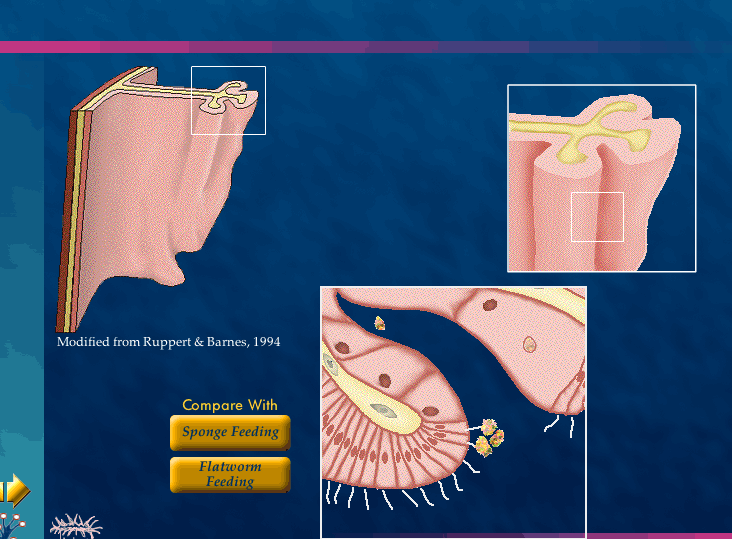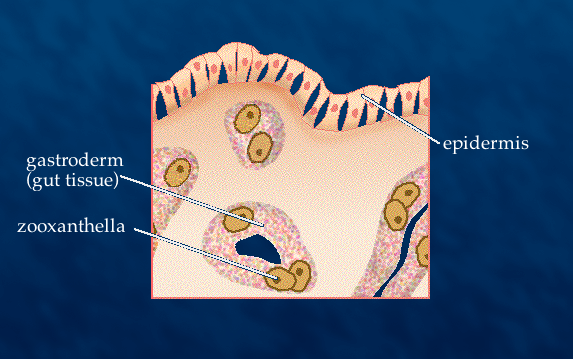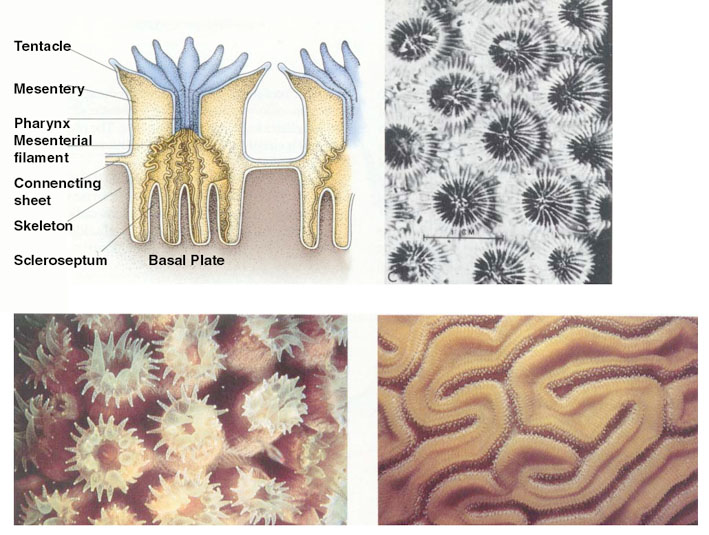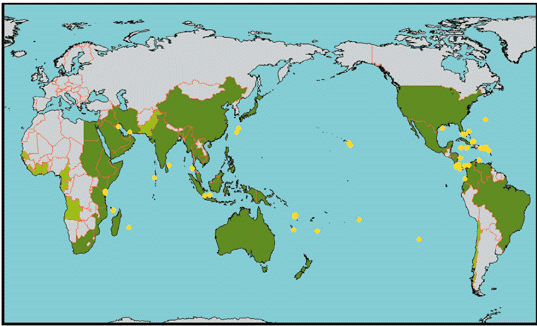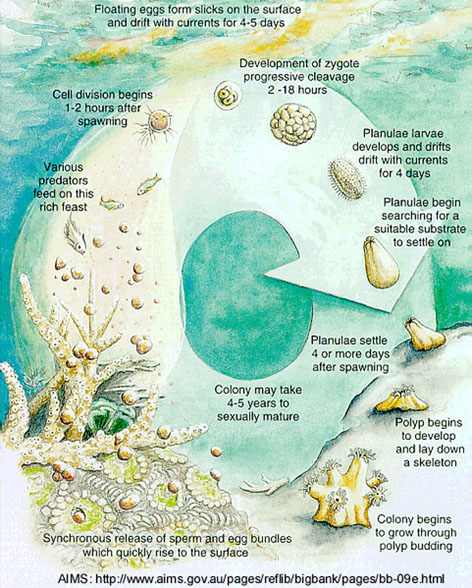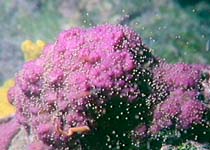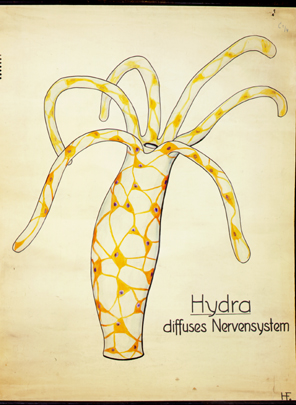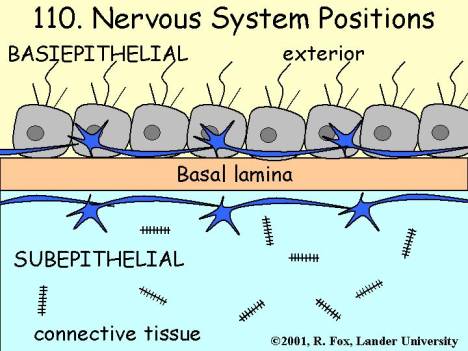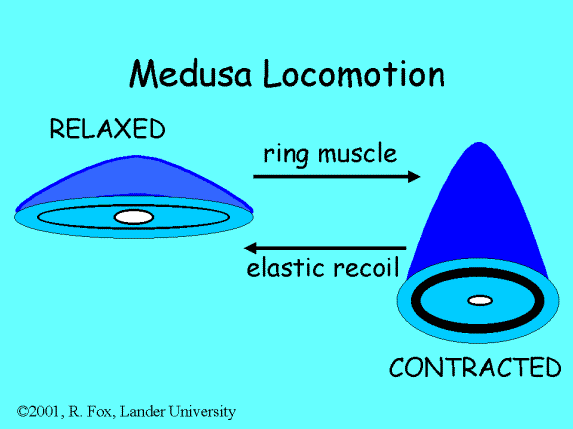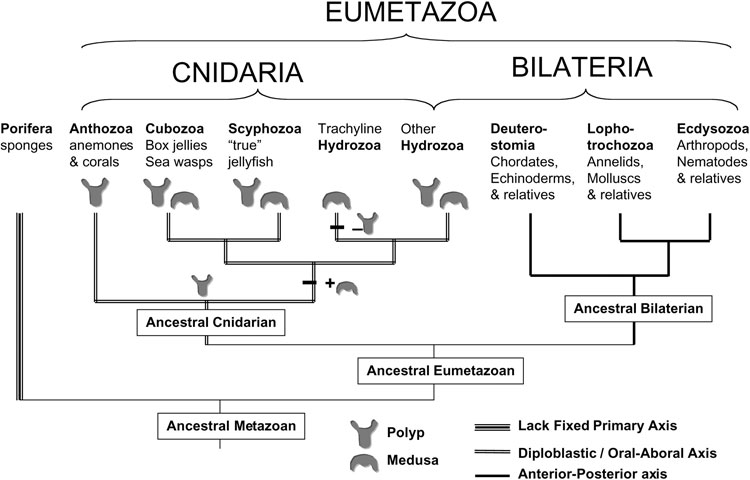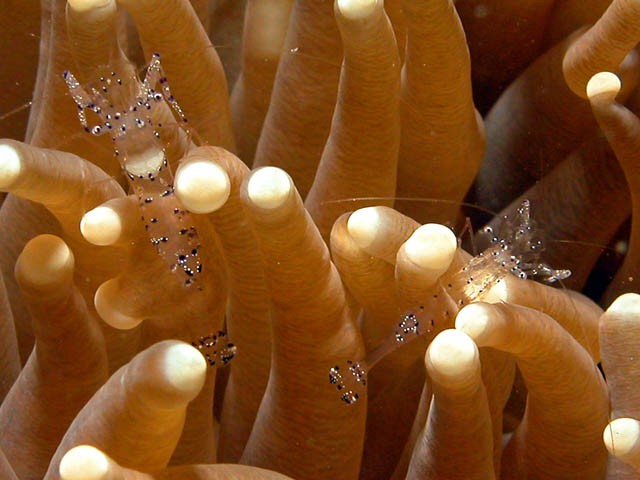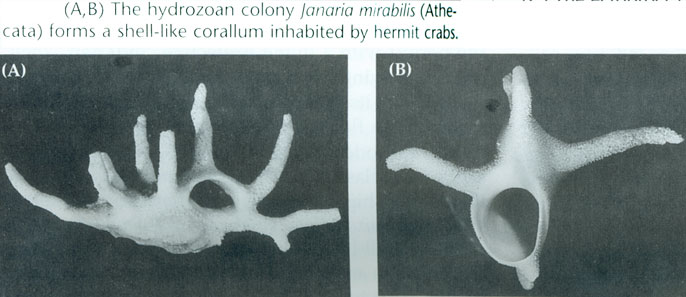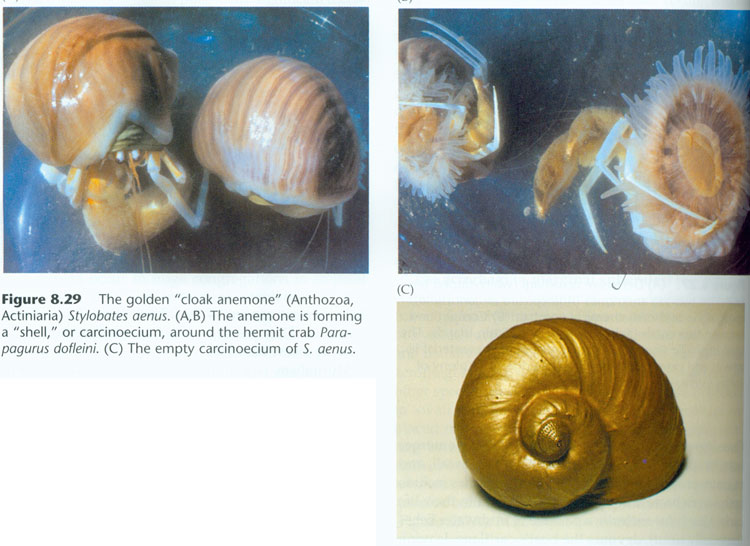CLADE or Class Hydrozoa: 3,000 species. Usually both polyp and medusa .
These have simplest body plan of all Cnidarians. Gastrovascular cavity is always simple. No cnidocytes in gastroderm.
Most are dimorphic, with polyp and medusa generally of equal importance although there are orders in which either polyp or medusa is much reduced, or even absent entirely.
The "typical life style"
Examples:Medusae are missing in the life cycle of Hydra.
A polyp-like Actinula larva develops from the planula in orders Narcomedusae and Trachymedusae. This develops into the adult medusa, so there is no polyp stage as such in these orders.
In some, a medusa exists but it is retained.
Most are colonial with horizontal stolons connecting polyps. Rootlike stolons form a network of hydrorhizae which anchor colony to substrate. Polyps often differentiate into gastrozooids and gonozooids. There are sometimes also specialized defensive polyps (dactylozooids). All of these may occur within a single colonial organism, a so-called polymorphic colony. The dactylozooids and most gonozooids do not feed.
1. Hydra (Hydra littoralis)
link to review
The New Latin name, Hydra, is derived from the monster in Greek legend with many heads who grew two more whenever one was cut off. It was finally slain by Hercules who cauterized each neck after severing its head. The regenerative powers of hydra are quite remarkable, a single hydra may be cut into many pieces and provided that each piece contains a portion of the two body layers, ectoderm and endoderm, it will develop into a complete animal. A Hydra was first described by Leeuwenhoek in 1703.
Unusual because in Hydra there is no medusa.
Hydra can reproduce sexually. Look for ovaries near the base, testes higher on the column. Once fertilized, this egg develops a protective ornamented shell and frequently enters a stage of arrested development or dormancy. When favorable conditions return (often in the following spring), development resumes and the young hydra develops directly without a larval stage.
Common species has symbionts. Chlorohydra viridissima
So, although a common laboratory animal Hydra is an atypical hydrozoan, because it only has a polyp stage and lives in fresh water.
2. Craspedacusta sowerbyi
In other fresh water forms the medusa dominates. Craspedacusta sowerbyi, only common freshwater jellyfish.
This species is more typical in that it has a polyp and a medusae.
As expected the medusae reproduces sexually. Egg and sperm are released and the fertilized egg or zygote develops into a planula larvae that eventually settles down and forms a poly.
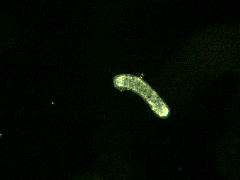
There is a twist on this life cycle however because the polyps reproduce asexually, to form "frustules". They move slowly.
Frustule versus larvae size and structure
Also, during winter months, polyps contract and become dormant, as to survive the cold temperatures. These polyps, also known as podocysts, can be transported by aquatic plants, aquatic animals, or birds' feet to new areas of dispersal. As winter ends, and conditions become more favorable, the podocysts mature back into polyps.
3. Also most hydrozoans are colonial and show polyp polymorphisms. Most at least have gastrozooids and gonozooids. Obelia is an example. Also transparent protective tube, a perisarc, found in most species, composed of polysaccharides, protein and chitin. If it covers the polyps, it is known as a theca.
So Obelia is a thecae species, Hydra is athecae.
4. Interesting polymorphisms.
a. Velella has floating polyp colonies.
One of the individuals becomes a float. The float contains a series of sealed air chambers that provide buoyancy. Total width of the floating polyp is usually less than 6 cm. Beneath the float is a grouping of several types of zooids, colored brown by the presence of zooxanthellae. A large central mouth (gastrozooid) is surrounded by shorter reproductive stalks (gonozooids) with mouth openings that bud tiny adult medusae that produce eggs and sperm. Multitudes of tiny brownish-green medusae that never grow to more than 3 mm tall are cast off (last photo). These then release the eggs and sperm that produce free-swimming larvae which eventually develop into more floating polyps
But there are alternate interpretations.
b. Physalia Portuguese Man of War appears to be a true colony.

